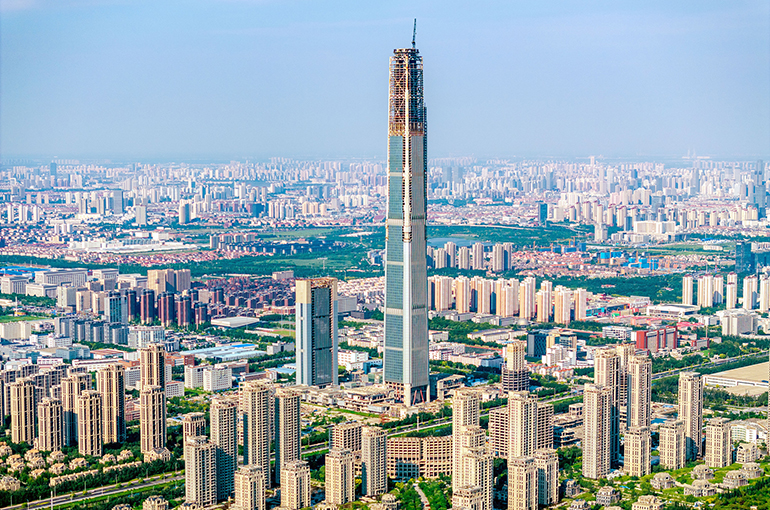 Two Long-Stalled Supertall Skyscraper Projects Resume Construction in China
Two Long-Stalled Supertall Skyscraper Projects Resume Construction in China(Yicai) April 22 -- Two landmark skyscraper projects in China have resumed construction after more than five years of suspension, spurred by supportive government policies and signs of market recovery.
The Tianjin 117, a mixed-use skyscraper designed to be the tallest building in northern China, is scheduled to restart construction on April 30 after nearly a decade-long hiatus caused by the developer’s financial collapse, the Ministry of Housing and Urban-Rural Development recently disclosed on its public platform. The project is expected to be completed within two years.
Goldin Properties Holdings, a Hong Kong-based developer, began construction on the 117-story project in 2008 with a planned investment of nearly USD10 billion and a structural height of almost 597 meters. The main structure was completed in 2015, but work was halted when the company encountered serious financial difficulties.
Zhang Hongwei, founder of Jingjian Consulting, told Yicai that following the introduction of new supportive policies, the local government this year finally secured a capable successor with strong financial resources to take over the Tianjin 117 project. Policy support has been crucial, Zhang noted.
The project was revitalized through market-oriented strategies such as debt-to-equity swaps and asset restructuring. Cinda Real Estate and several state-owned enterprises jointly established a CNY30 billion (USD4.1 billion) bailout fund to facilitate the restart.
Tallest in Southwest China Through Policy Support
Another prominent project, the Greenland Shufeng 468 in Chengdu, also resumed construction last week.
On April 17, Greenland Group restarted the 468-meter-tall project, which had been suspended for nearly six years. The mixed-use tower, which includes office, hotel, and retail space, is expected to be completed in the first half of 2027 and become the tallest building in southwest China.
Zhang from Jingjian Consulting said that supertall skyscrapers are typically located in core areas of major cities and often have long construction cycles. During downturns, once a developer’s capital chain breaks, continuing construction becomes difficult due to the high costs and complex debt structures involved.
Bai Wenxi, chief economist of the China Enterprise Capital Alliance, said the recent wave of resumed construction is closely linked to government policies encouraging real estate firms to revitalize existing assets.
Restarting construction on these supertall projects marks a breakthrough in the real estate industry's risk mitigation efforts, Bai said, adding that it will help rebuild the confidence of homebuyers and investors and boost overall market activity.
However, Bai also cautioned that once completed, these skyscrapers could face significant leasing pressure in cities with high commercial office vacancy rates, given the long absorption cycles, high costs, and complex operations.
Zhang added that if these projects are managed well, they still hold considerable potential for leasing and sales growth, especially as China’s monetary easing cycle is expected to persist and the macroeconomy is likely to remain on a stable upward trajectory over the next three to five years.
Editors: Tang Shihua, Emmi Laine